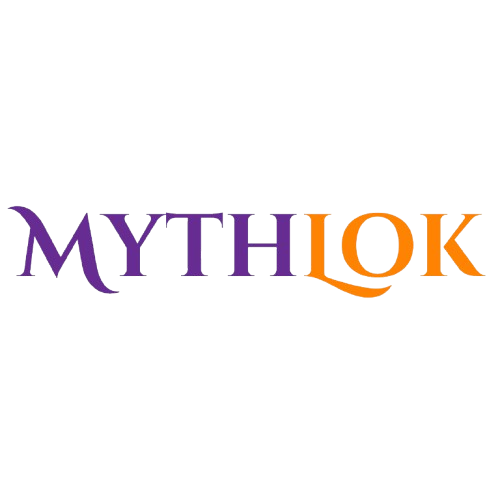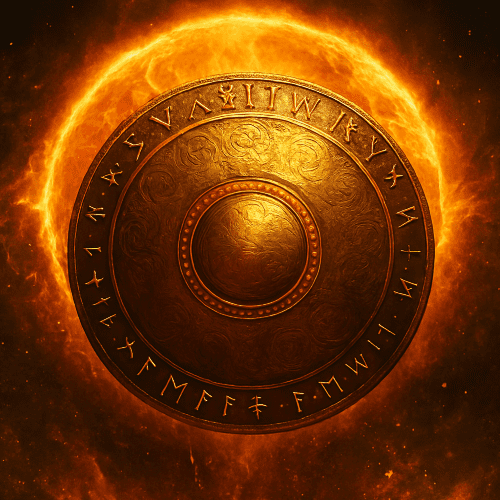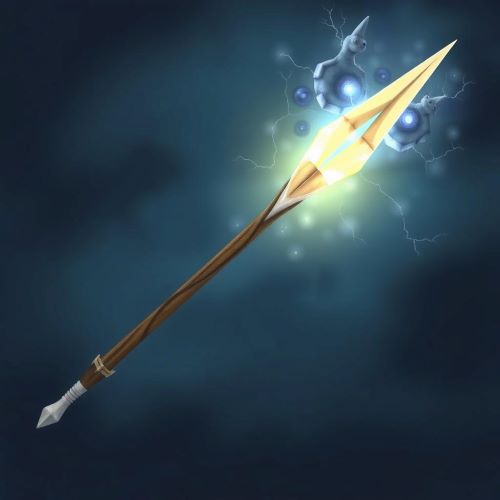Aegis : The Divine Shield
Aegis
Introduction
The Aegis stands as one of the most revered symbols in Greek mythology, often depicted as a shield, breastplate, or protective cloak. Primarily wielded by Zeus and Athena, it embodies divine authority, strength, and protection. More than a mere weapon, it serves as a powerful emblem of the gods’ ability to defend and enforce their will.
Ancient texts frequently describe the Aegis as a goatskin cloak imbued with supernatural power, reinforcing its role as both a defensive tool and a mark of divine supremacy. This blog delves into its origins, abilities, notable wielders, and key appearances in mythological narratives.
Origins
The origins of the Aegis are deeply rooted in Greek mythology, with various accounts attributing its creation to different sources. One prevalent belief is that Hephaestus, the Olympian blacksmith, crafted it from the hide of a powerful beast, such as a Gorgon or the goat Amalthea, which nursed Zeus as an infant. The Greek word aigis, meaning “goatskin,” reinforces this connection to Amalthea and suggests the material from which it was made.
Another version of the myth describes the Aegis as a mystical cloak woven by Athena, imbued with divine energy capable of instilling fear in adversaries. Some depictions also feature the head of Medusa affixed to it, amplifying its terrifying presence in battle.
Legends further credit the Cyclopes, renowned smiths of Greek mythology, with forging the Aegis alongside other divine weapons. This craftsmanship elevated it beyond a mere protective artifact, solidifying its association with Zeus and Athena as a symbol of their authority and power. Over time, it became a representation of divine justice, reinforcing the gods’ roles as both protectors and enforcers of cosmic order.
Think you know your myths and legends? Dive into the world of ancient stories and test your knowledge with our engaging quizzes on Mythlok!
Powers
The Aegis is endowed with extraordinary abilities that extend beyond mere defense. As an impenetrable shield, it grants its bearer near-invincibility, ensuring protection from any attack. Its fearsome presence alone was enough to scatter enemies in panic, with ancient texts describing its power to sow chaos on the battlefield.
One of its most terrifying features was the head of Medusa affixed to its surface, which could turn those who gazed upon it to stone. Additionally, the Aegis was linked to the forces of nature—when shaken, it could unleash storms, thunder, and lightning, reinforcing its divine origin.
Beyond its destructive capabilities, some legends attribute healing properties to the Aegis, suggesting it could mend wounds and restore vitality. More than just a weapon, it symbolized Zeus and Athena’s authority, embodying both their wrath and their protective influence over mortals and deities alike.
Owners/Users
The Aegis is primarily associated with Zeus and Athena, each embodying different aspects of its power. Zeus, as the ruler of Olympus, wielded it to reinforce his authority and unleash divine wrath upon his enemies, particularly in conflicts against the Titans and other challengers. Athena, known for her strategic brilliance and martial prowess, integrated the Aegis into her armor, using it both defensively and offensively in battle.
Though predominantly linked to these two deities, the Aegis occasionally found its way into the hands of others. In The Iliad, Apollo momentarily wielded it to aid Hector, demonstrating its adaptability beyond mere combat. This occasional transfer of the Aegis underscores its role as a divine instrument of protection and power, reinforcing the hierarchy and interconnected nature of the Olympian gods.
Instances used
The Aegis features prominently in numerous myths, serving as a powerful emblem of divine authority and protection. One of its most notable appearances is in The Iliad, where both Zeus and Athena wield it to influence the Trojan War—Zeus to assert his dominance over mortals and Athena to shield and empower her chosen heroes. The shield’s presence on the battlefield often dictated the tide of war, striking terror into enemies and providing an unbreakable defense.
In some versions of the Perseus myth, Athena lends the Aegis to the hero during his quest to defeat Medusa. The shield’s reflective surface enables him to avoid direct eye contact with the Gorgon, ensuring his success without falling victim to her petrifying gaze. This particular tale underscores the Aegis’s role as more than just a weapon; it is also a tool of strategy and intellect.
During the Gigantomachy, the legendary war between the Olympian gods and the Giants, Zeus and Athena employ the Aegis to defend against their formidable foes. Its supernatural properties—rendering enemies powerless and spreading chaos among opposition forces—are instrumental in the gods’ ultimate triumph.
Beyond battle, the Aegis is referenced in The Odyssey as a mark of divine influence, reinforcing its broader significance in Greek mythology. Artistic representations of Athena frequently depict her with the Aegis draped across her shoulders, often adorned with the head of Medusa, symbolizing wisdom, courage, and the omnipresent power of the gods.
Frequently Asked Questions
Lorem ipsum dolor sit amet, consectetur adipiscing?
Lorem ipsum dolor sit amet, consectetur adipiscing elit. Praesent convallis vestibulum justo, ac tincidunt nunc vehicula quis. Nullam id dolor quis orci malesuada feugiat. Curabitur aliquet libero at urna ullamcorper, ac ultricies nulla dapibus.
Lorem ipsum dolor sit amet, consectetur adipiscing?
Lorem ipsum dolor sit amet, consectetur adipiscing elit. Praesent convallis vestibulum justo, ac tincidunt nunc vehicula quis. Nullam id dolor quis orci malesuada feugiat. Curabitur aliquet libero at urna ullamcorper, ac ultricies nulla dapibus.
Lorem ipsum dolor sit amet, consectetur adipiscing?
Lorem ipsum dolor sit amet, consectetur adipiscing elit. Praesent convallis vestibulum justo, ac tincidunt nunc vehicula quis. Nullam id dolor quis orci malesuada feugiat. Curabitur aliquet libero at urna ullamcorper, ac ultricies nulla dapibus.
Lorem ipsum dolor sit amet, consectetur adipiscing?
Lorem ipsum dolor sit amet, consectetur adipiscing elit. Praesent convallis vestibulum justo, ac tincidunt nunc vehicula quis. Nullam id dolor quis orci malesuada feugiat. Curabitur aliquet libero at urna ullamcorper, ac ultricies nulla dapibus.
Lorem ipsum dolor sit amet, consectetur adipiscing?
Lorem ipsum dolor sit amet, consectetur adipiscing elit. Praesent convallis vestibulum justo, ac tincidunt nunc vehicula quis. Nullam id dolor quis orci malesuada feugiat. Curabitur aliquet libero at urna ullamcorper, ac ultricies nulla dapibus.
Watch
Source
Burkert, Walter. “Greek Religion: Archaic and Classical.” Harvard University Press, 1985.
Homer. “The Iliad.” Translated by Robert Fagles, Penguin Classics, 1990.
Homer. “The Odyssey.” Translated by Robert Fagles, Penguin Classics, 1996.
Kerenyi, Karl. “The Gods of the Greeks.” Thames & Hudson, 1951.
Morford, Mark, and Robert Lenardon. “Classical Mythology.” Oxford University Press, 2007.
“Aegis.” Britannica. Accessed February 27, 2025.
“Greek Mythology: Aegis.” Ancient History Encyclopedia. Accessed February 27, 2025.








